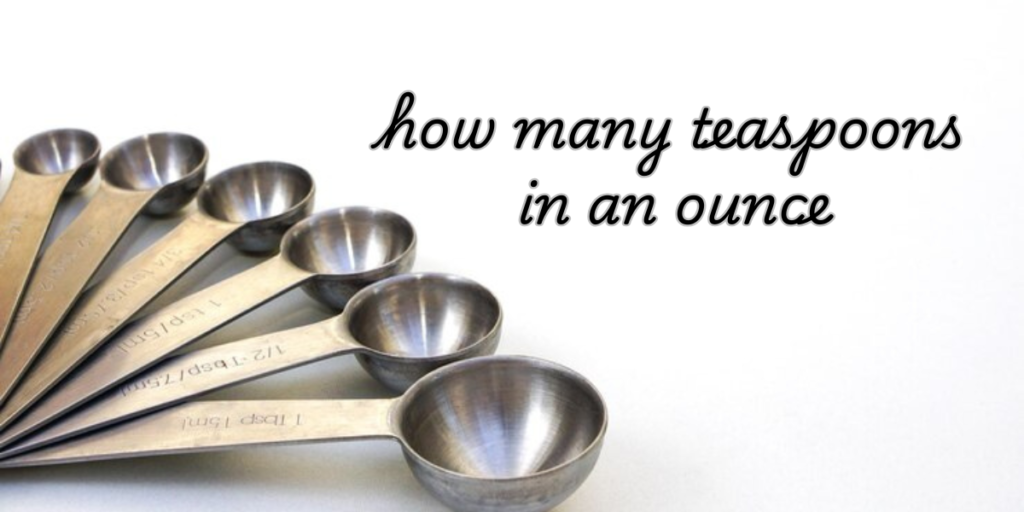When you’re cooking or baking, precise measurements are crucial. Whether you’re following a recipe or improvising, knowing how many teaspoons are in an ounce can help you get the right proportions. This guide will not only answer that question but also dive deeper into related measurements and conversions. By the end of this article, you’ll feel more confident in handling measurements in the kitchen.
What Is an Ounce?
An ounce (oz) is a unit of weight and volume used in the U.S. customary and British imperial systems. It is most commonly associated with liquid or dry measurements. In the United States, one ounce is equal to approximately 28.35 grams in weight when dealing with solid substances. When dealing with liquids, an ounce is typically understood as a measure of volume—roughly 29.57 milliliters.
How Many Teaspoons Are in an Ounce?
The answer to the question of “how many teaspoons in an ounce” depends on whether you’re working with a liquid or dry ingredient. In standard culinary measurement:
- 1 US ounce (liquid) = 6 teaspoons
- 1 UK ounce (liquid) = 4.8 teaspoons
The discrepancy arises because different measurement systems are used in the US and the UK. The US system uses a liquid ounce of 29.57 milliliters, while the UK uses a fluid ounce of 28.41 milliliters.
Teaspoons and Ounces in Dry Ingredients
When converting for dry ingredients, the density of the substance affects the measurement. For example, a teaspoon of sugar will weigh differently from a teaspoon of flour, and the conversion between teaspoons and ounces can vary accordingly.
Why Knowing the Conversion Matters
- Accurate Measurements for Cooking and Baking: Accurate measurements can be the difference between a dish turning out perfectly or failing miserably. A teaspoon of salt or a teaspoon of baking powder can drastically alter the final result in a recipe, so knowing conversions can save you time and frustration.
- Consistency Across Recipes: If you frequently follow recipes from various sources, especially those from different countries, it helps to understand how many teaspoons are in an ounce to ensure you’re interpreting them correctly.
- Avoiding Errors in Scaling Recipes: When you need to scale a recipe up or down, using the right conversions can make sure the final outcome is just as good as the original.
Teaspoon to Ounce Conversion Table
Below is a handy table to help you understand the conversion between teaspoons and ounces for both liquid and dry ingredients.
| Measurement Type | 1 Ounce (US) | 1 Ounce (UK) |
| Liquid Ingredients | 6 teaspoons | 4.8 teaspoons |
| Dry Ingredients | 6 teaspoons | 4.8 teaspoons |
How to Convert Teaspoons to Ounces
If you need to convert teaspoons into ounces, it’s relatively simple using the following formulas:
- For US measurements, divide the number of teaspoons by 6.
- Example: 12 teaspoons ÷ 6 = 2 ounces.
- For UK measurements, divide the number of teaspoons by 4.8.
- Example: 12 teaspoons ÷ 4.8 = 2.5 ounces.
Common Kitchen Conversions Involving Teaspoons and Ounces
While the focus of this article is on teaspoons and ounces, it’s often useful to understand other common kitchen conversions that involve ounces.
Ounces to Cups
- 1 cup = 8 ounces (US measurement)
- 1 cup = 10 ounces (UK measurement)
Ounces to Tablespoons
- 1 tablespoon = 0.5 ounce (US measurement)
- 1 tablespoon = 0.4 ounce (UK measurement)
Grams to Ounces
- 1 ounce = 28.35 grams (US)
- 1 ounce = 28.4 grams (UK)
Commonly Used Ingredients in Teaspoon to Ounce Conversions
Let’s look at some common ingredients and their conversions from teaspoons to ounces.
- Sugar
- 1 teaspoon of granulated sugar = approximately 0.167 ounces.
- Flour
- 1 teaspoon of all-purpose flour = approximately 0.125 ounces.
- Salt
- 1 teaspoon of table salt = approximately 0.2 ounces.
- Butter
- 1 teaspoon of butter = approximately 0.17 ounces.
Conclusion
Knowing how many teaspoons are in an ounce is an essential kitchen skill, whether you’re cooking, baking, or experimenting with new recipes. By understanding the basic conversions between teaspoons and ounces, you can be more confident in your cooking measurements, no matter the recipe or the ingredient. Keep in mind that these conversions can vary slightly depending on the ingredient, so always double-check when you’re working with dry versus liquid substances.
This simple yet powerful knowledge will ensure that your dishes are not only successful but also consistent. So, whether you’re in the U.S. or the UK, knowing the number of teaspoons in an ounce is the key to perfecting your cooking!
Frequently Asked Questions (FAQs)
1. How many teaspoons in 1 ounce of liquid?
- In the U.S. measurement system, 1 ounce of liquid is equal to 6 teaspoons. In the UK, 1 ounce of liquid equals approximately 4.8 teaspoons.
2. How many teaspoons in 1 ounce of sugar?
- 1 teaspoon of granulated sugar weighs approximately 0.167 ounces. Therefore, you would need about 6 teaspoons of sugar to make up 1 ounce.
3. Can I use this conversion for dry ingredients?
- Yes, the conversion of teaspoons to ounces works similarly for dry ingredients. However, keep in mind that the weight of different dry ingredients (like flour, sugar, or salt) varies, so the weight of 1 teaspoon of one ingredient may differ from another.
4. How do I convert teaspoons to ounces?
- To convert teaspoons to ounces in the U.S. system, divide the number of teaspoons by 6. In the UK, divide by 4.8.
5. Are there any other measurement conversions I should know?
- Yes! You might also need to know conversions for cups, tablespoons, and grams. For example, 1 cup equals 8 ounces in the U.S. and 10 ounces in the UK.
6. Why are there different conversions for the US and UK?
- The discrepancy is due to differences in the Imperial system (used in the UK) versus the U.S. Customary system. These systems have different definitions for fluid ounces, leading to slightly different measurements.






